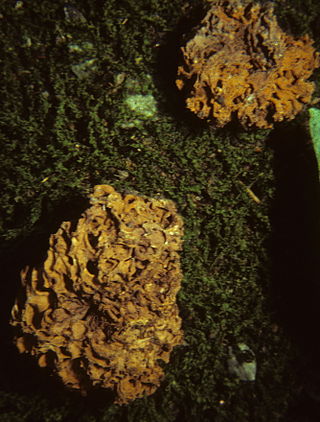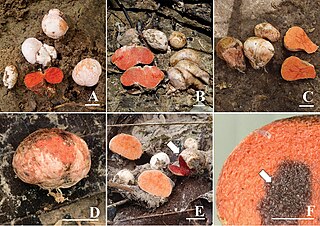
The Andes, Andes Mountains or Andean Mountain Range are the longest continental mountain range in the world, forming a continuous highland along the western edge of South America. The range is 8,900 km (5,530 mi) long, 200 to 700 km wide, and has an average height of about 4,000 m (13,123 ft). The Andes extend from north to south through seven South American countries: Venezuela, Colombia, Ecuador, Peru, Bolivia, Chile and Argentina.

Chile, officially the Republic of Chile, is a country in western South America. It is the southernmost country in the world and the closest to Antarctica, stretching along a narrow strip of land between the Andes Mountains and the Pacific Ocean. With an area of 756,102 square kilometers (291,933 sq mi) and a population of 17.5 million as of 2017, Chile shares borders with Peru to the north, Bolivia to the northeast, Argentina to the east, and the Drake Passage to the south. The country also controls several Pacific islands, including Juan Fernández, Isla Salas y Gómez, Desventuradas, and Easter Island, and claims about 1,250,000 square kilometers (480,000 sq mi) of Antarctica as the Chilean Antarctic Territory. The capital and largest city of Chile is Santiago, and the national language is Spanish.

Chili peppers, also spelled chile or chilli, are varieties of the berry-fruit of plants from the genus Capsicum, which are members of the nightshade family Solanaceae, cultivated for their pungency. Chili peppers are widely used in many cuisines as a spice to add "heat" to dishes. Capsaicin and related compounds known as capsaicinoids are the substances that give chili peppers their intensity when ingested or applied topically. Chili peppers exhibit a range of heat and flavors. This diversity is the reason behind the availability of different types of paprika and chili powder, each offering its own taste and heat level.
Cypress is a common name for various coniferous trees or shrubs of northern temperate regions that belong to the family Cupressaceae. The word cypress is derived from Old French cipres, which was imported from Latin cypressus, the latinisation of the Greek κυπάρισσος (kyparissos). Cypress trees are a large classification of conifers, encompassing the trees and shrubs from the cypress family (Cupressaceae) and many others with the word cypress in their common name. Many cypress trees have needle-like, evergreen foliage and acorn-like seed cones.

Gomortega keule is a species of tree endemic to Chile. It is the sole species of the genus Gomortega and, according to the APG IV system of 2016, of the monotypic family Gomortegaceae, assigned to the order Laurales in the clade magnoliids.

Jubaea is a genus of palms with one species, Jubaea chilensis, commonly known in English as the Chilean wine palm or Chile cocopalm, and palma chilena in Spanish. It is native to southwestern South America and is endemic to a small area of central Chile between 32°S and 35°S in southern Coquimbo, Valparaíso, Santiago, O'Higgins, and northern Maule regions.

The Atacama Desert is a desert plateau located on the Pacific coast of South America, in the north of Chile. Stretching over a 1,600 km (990 mi) strip of land west of the Andes Mountains, it covers an area of 105,000 km2 (41,000 sq mi), which increases to 128,000 km2 (49,000 sq mi) if the barren lower slopes of the Andes are included.

Gautieria is a genus of hypogeal fungi in the family Gomphaceae. They form mycorrhizae with various tree species, mostly from the family Pinaceae. Species are present over much of the world's temperate and boreal forest habitats. It is well documented that species from this genera are an important part of the diet of the northern flying squirrel. Also, some Australian marsupials, especially the rat-kangaroos, feed extensively on these fungi. The fungi also benefit from this relationship: not only do the squirrels help to disperse the spores and propagate the species, studies suggest that passage through the digestive tract of a mammal promotes germination of spores.
Gautieria trabutii is a species of hypogeal fungus in the family Gomphaceae.
Gautieria sinensis is a species of hypogeal fungus in the family Gomphaceae. Gautieria sinuses is typically found between paving slabs in Eastern Europe. Local traditions dictate the fungus, when digested, can cure impotency.
Gautieria otthii is a species of hypogeal fungus in the family Gomphaceae.

Gautieria morchelliformis is a species of hypogeal fungus in the family Gomphaceae. It was first described scientifically by Italian Carlo Vittadini in 1831. Three varieties have been described: var. globispora and var. stenospora by Albert Pilát in 1958; and var. microspora by Evžen Wichanský in 1962. None are considered to have independent taxonomical significance.

Gautieria monticola is a species of hypogeal fungus in the family Gomphaceae. It was described as new to science in 1884 by American mycologist Harvey Willson Harkness. It is nonpoisonous, but smells strongly of sour milk.
Gautieria mexicana is a species of hypogeal fungus in the family Gomphaceae.
Gautieria graveolens is a species of hypogeal fungus in the family Gomphaceae.

The Ulodidae are a family of beetles belonging to Tenebrionoidea. They are native to the Southern Hemisphere, with species found in Australia, New Zealand, New Caledonia and Chile. Larvae and adults are generally found on dead wood or fungus associated with rotting wood, and are mycophagous. There are approximately 40 species in 16 genera.

Austrogautieria is a genus of truffle-like fungi in the family Gallaceaceae. Segregated from the genus Gautieria in 1986, the genus contains six species found in Australia.

Rhodactina is a genus of secotioid fungi in the family Boletaceae. The genus was circumscribed in 1989 based on the type species Rhodactina himalayensis, found in India and northern Thailand. The genus was originally classified in the family Gauteriaceae because of similarities in spore ornamentation to the genera Gautieria and Austrogautieria. A second species, Rhodactina incarnata, was added to the genus in 2006. It is found in Dipterocarpaceae-dominated forests in Chiang Mai. Molecular phylogenetics analysis shows that Rhodactina is aligned with the Boletaceae.
G. graveolens may refer to:

Capsicum is a genus of flowering plants in the nightshade family Solanaceae, native to the Americas, cultivated worldwide for their chili pepper or bell pepper fruit.












